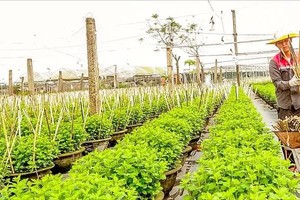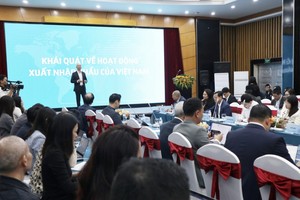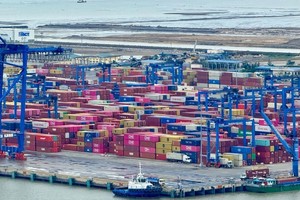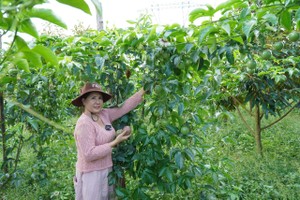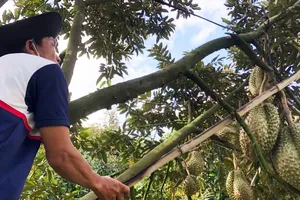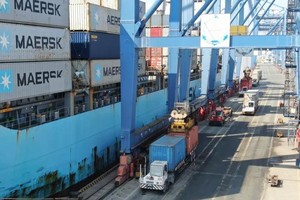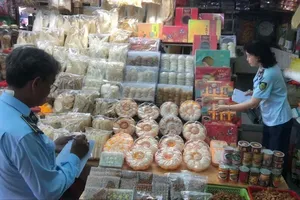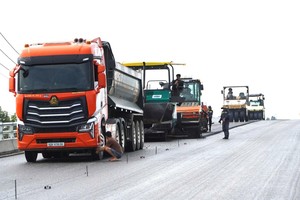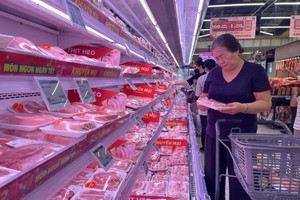
Optimism in the coffee fields
Farmers in Vietnam's Central Highlands have celebrated the Lunar New Year with great enthusiasm and joy. During the days prior to Tet, they were busy shopping and decorating their homes. In cities and towns like Buon Ma Thuot, Buon Ho, Phuoc An (Dak Lak Province), Pleiku, An Khe (Gia Lai Province), Kon Tum, Dak Ha (Kon Tum Province), Gia Nghia, and Dak Mil (Dak Nong Province), farmers are flocking to car showrooms to purchase new vehicles. This upbeat mood is fueled by the record-high prices seen in the 2024-2025 coffee harvest season.
Mr. Nguyen Nam Hai, Chairman of the Vietnam Coffee Cocoa Association, notes that while the 2024-2025 season presents challenges, it also brings promising prospects. The Central Highlands, the largest coffee-growing region in the country, continues to face weather unpredictability. However, thanks to farmers' proactive adaptability, along with support from businesses and local authorities, the quality of Vietnamese coffee is steadily improving.
A positive trend is the increasing focus on sustainable farming. More farmers are adopting Rainforest Alliance (RA) standards and green agricultural models to ensure product quality, reduce environmental impact, and enhance commercial value. Companies such as Phuc Sinh Group, Vinh Hiep, Hoa Trang Gia Lai, Simexco Daklak, and several others in the region are working closely with farmers on better farming techniques and offering higher prices for certified products.
Direction for regenerative agriculture
In 2024, Dak Lak Province exported over 264,000 tons of coffee, earning $915 million, a significant increase of $168 million compared to the same period in 2023. Of this total, more than $783 million came from green coffee beans, while nearly $132 million was generated by instant coffee. This year also marked the first time that Gia Lai province’s coffee export value reached $620 million, making it the leading industry in the region. Dak Nong also saw impressive growth, with coffee exports reaching $280 million, a 70-percent increase over 2023.
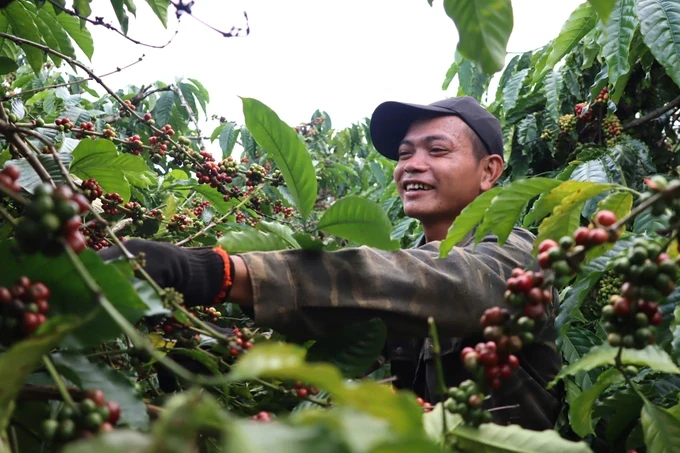
According to data from the Vietnam Coffee and Cocoa Association, in January 2025, Vietnam exported 154,635 tons of coffee, generating $799.48 million in revenue. Among this, 137,568 tons were coffee beans, accounting for $694.93 million—a 38.2-percent drop in volume but an 8.8-percent increase in revenue compared to the same period last year. Processed coffee exports amounted to 17,067 tons, earning $104.55 million. Overall, in 2024, Vietnam exported nearly 1.35 million tons of coffee, earning a record $5.62 billion.
Looking ahead to the coffee industry’s prospects in 2025, Mr. Phan Minh Thong, Chairman of Phuc Sinh Group (headquartered in Ho Chi Minh City), a top coffee exporter in Vietnam, noted that domestic coffee prices exceeding VND130,000 per kilogram is a significant milestone. This price surge is driven by multiple factors: a reduced supply of Robusta coffee due to weather impacts in Vietnam and major coffee producers like Brazil and Indonesia, coupled with increasing demand in key markets such as Europe, the US, and China.
Vietnam remains the world’s leading supplier of Robusta coffee, but with prices rising rapidly, exporters face challenges related to sourcing and fulfilling contracts. The surge in prices could exert pressure on contracts agreed at lower prices, affecting the ability to meet commitments.
Local governments in the Central Highlands recognize that coffee cultivation has played a vital role in diversifying crop structures, generating stable employment and income for tens of thousands of local workers, and establishing concentrated raw material zones, leading to high-value export products.
Mr. Doan Ngoc Co, Deputy Director of Gia Lai Province’s Department of Agriculture and Rural Development, stated that the province will prioritize the renewal of aging coffee plantations, using high-yield, high-quality varieties that are resistant to pests and diseases. Additionally, the province will continue to strengthen supply chain development to ensure that raw materials meet international standards.
Efforts to produce coffee using regenerative agricultural practices are underway, with a focus on achieving a sustainable coffee industry that meets the stringent requirements of demanding markets. By 2030, Gia Lai aims to maintain coffee production areas of around 100,000-110,000 hectares, with 80 percent of production following standards such as VietGAP, 4C, and Organic.
Domestic coffee brands expanding market share
In Ho Chi Minh City, the coffee shop scene has seen rapid growth over the past decade, with Katinat emerging as one of the standout brands alongside long-established names. By early 2025, Katinat operates around 80 stores, primarily in major cities. Another key player in the city is Trung Nguyen.
While focusing on the domestic market, Trung Nguyen has also been expanding internationally, opening stores in China and the US. Other brands like Phuc Long and Highlands Coffee have also been increasing their presence, expanding across Ho Chi Minh City and nationwide. In addition to these well-known names, several franchise chains such as Ong Bau Coffee, GUTA Cafe, Cong Coffee, KCoffee, Milano, and Napoli have been expanding rapidly in Ho Chi Minh City and nearby areas.
According to the Vietnam Coffee Cocoa Association, coffee consumption per capita has risen from 1.7 kg in 2015 to 3 kg in 2025. Domestic consumption is expected to reach 270,000-300,000 tons annually by 2025, with an average annual growth rate of about 6.6 percent from 2025 to 2030.



